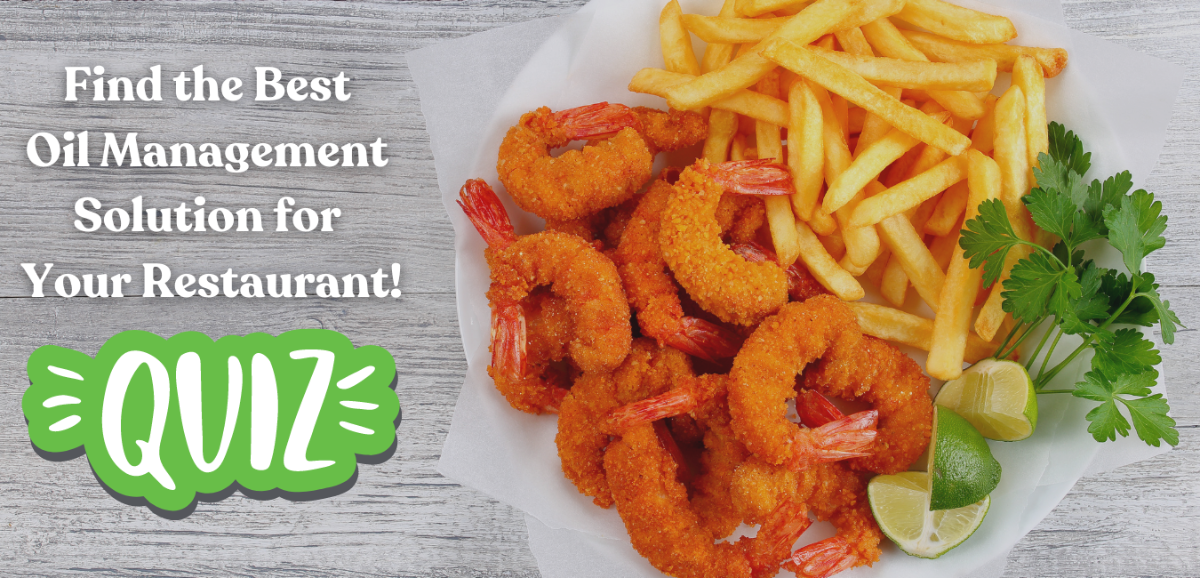Here's Everything You Need to Know about Frying With Oil
Getting that perfect, crispy, golden-brown fry is the ultimate goal when frying with oil. The texture and flavor can't be matched with any other cooking method. So to help you achieve the perfect fry, we've compiled all the info and resources you'll need so you can get the best results possible. Here's everything you need to know about frying with oil.

Choose Your Frying Oil
While there's no single oil that's best for deep frying, there are oils that are more stable, healthier, have a high smoke point, and have a neutral flavors so they won’t affect the taste of your food. When frying with oil, our top choices include:
- Avocado Oil
- Grapeseed Oil
- Peanut Oil
- Canola Oil
- Lard
All of these oils have a high smoke point and are neutral enough to not affect the flavor of your fried food. If you'd like to see a breakdown of the best oils for frying, click here. If you want to know which oils are the healthiest to fry with, click here.
Preparation for Frying with Oil
Before deep-frying, decide if you want to have breaded/battered or non-breaded fried food. For example: chicken wings can be served with breading or served "naked." If you decide you want to bread or dip you food in batter, there are some extra steps you need to take. Here's how to get a great, crispy fry with batter. If you decide to go the naked route with potato chips, wings, veggies, etc. simply pat the food down to be as dry as possible with a paper towel. Excess moisture can make hot oil “spit”, splatter, and smoke faster, which causes a very unwanted flavor, potential danger, and a poor cook.
The Perfect Temperature for Frying with Oil
Probably the most important aspect of frying with oil is getting the temperature correct. If the oil temperature isn’t high enough, the food will emerge greasy and may stick together. If it’s too hot, the exterior of the food will cook too quickly and burn before the inside is cooked.
We highly recommend using a deep fryer that has a thermometer built-in, but if you don't have one, use a cooking thermometer to keep track of your oil temperature.
To get the perfect fry, oil needs to be between 350°F and 375°F. For the absolute perfect temperature for specific frying oils, click here.
What do I do if I don't have a thermometer or deep fryer?
If you don't have a way to see what temperature you're at when frying with oil, that's okay - there's a hack for that. To test the temperature of the oil, drop a cube of bread into it. The bread will turn golden brown in 25-30 seconds at 320°F, in 20 seconds at 338°F, in 15 seconds at 356°F and in 10 seconds at 374°F.
If you need more information on getting the temperature correct, see this step-by-step guide on how to heat oil for deep frying.
Frying with Oil
Once the oil has reached the perfect temperature, it's time to start frying! If you have a deep fryer, lift a basket out of the oil, place your food into the basket and lower it in. If you are using a pot, grab a metal slotted spoon to add food into the oil slowly. Avoid overcrowding your fryer, and if your fryer isn't temperature controlled, make sure your food is at room temperature before putting it in so it doesn't lower the temperature of the oil.
When turning food in the oil, we recommend using a spoon or tongs, as a fork or other sharp objects can pierce the surface and cause moisture to escape. After deep-frying, remove the food and place on a paper towel or cooling rack to allow excess oil to drain off. Serve quickly once the oil has drained, deep-fried food is best eaten piping hot!
Bonus tips:
1. Never leave hot oil unattended! It only takes a minute or two for the oil to overheat and catch fire.
2. If you're using a pan, turn the handles away from the front of the cooker to avoid knocking the pan off the hob.
3. You can reuse your fryer oil to save money! But you'll want to "clean" it first. To do this, toss a FreshFry Pod into the fryer while the oil is still hot. Then take it out after it's cooled. Your oil can stay fresh by using a Pod after each fry for up to 7 days. Learn more about Pods here.
4. To dispose of the oil safely, leave your oil to cool completely, pour into a jug, then back into its original bottle. Never pour the oil down the sink, this can cause backed-up pipes and environmental issues!






